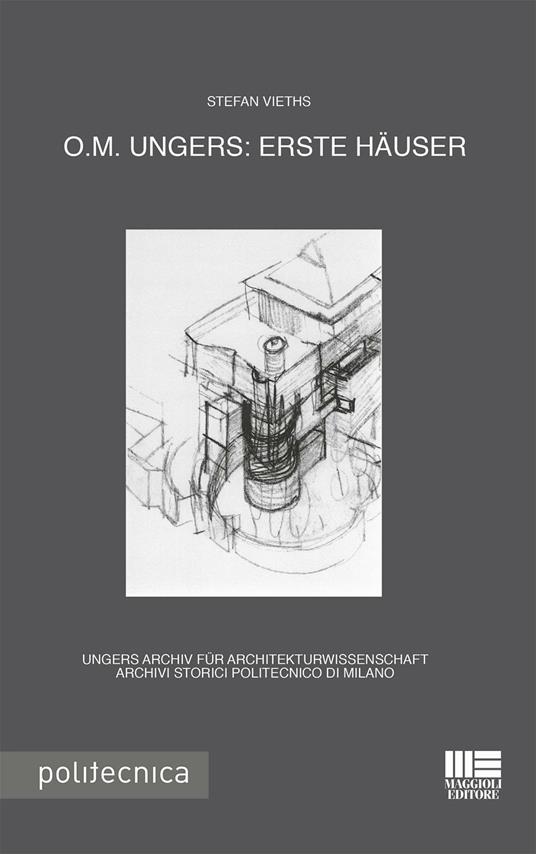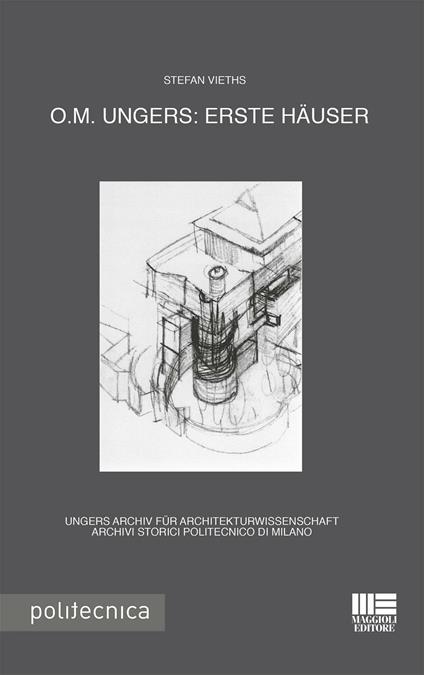L’articolo è stato aggiunto alla lista dei desideri
O.M. Ungers: Erste häuser
Cliccando su “Conferma” dichiari che il contenuto da te inserito è conforme alle Condizioni Generali d’Uso del Sito ed alle Linee Guida sui Contenuti Vietati. Puoi rileggere e modificare e successivamente confermare il tuo contenuto. Tra poche ore lo troverai online (in caso contrario verifica la conformità del contenuto alle policy del Sito).
Grazie per la tua recensione!
Tra poche ore la vedrai online (in caso contrario verifica la conformità del testo alle nostre linee guida). Dopo la pubblicazione per te +4 punti



Tutti i formati ed edizioni
The exhibition O.M. Ungers- Prime Case shows three key works in the early production of Oswald Mathias Ungers (1926-2007). These houses show - in a negative moment for the Modern movement - a new way of intending architectural form, a research through which Ungers has become one of the protagonists of the architectural debate in the following decades. This is true mostly in Italy where, in 1960, Aldo Rossi published a long article on Ungers' works in Casabella, showing a sort of Wahlverwandschaft - an affinity- between the German artist and a group of young architects close to Ernesto N. Rogers. Beyond their meaning in the debate at the beginning of the 1960s these houses show a central aspect of Ungers' work: the research - continuous for more than 50 years - on architectural form itself, that means the laws of its formation and transformation and its basic phenomena: Körper und Raum (solid and space). It is a morphological research, as Goethe would say, where the architectural form is considered as a unified whole, a Gestalt, a concept with a specific order that is able to give a complete interpretation of program and place. Die Ausstellung O.M. Ungers - Erste Häuser zeigt drei Werke, die im Frühwerk von Oswald Mathias Ungers (1926 - 2007) eine Schlüsselrolle einnehmen. Es sind äuser, die in einem Moment der Krise der Moderne die Suche nach einem neuen Verständnis der architektonischen Form reflektieren und die Ungers zu einem Protagonisten der Architekturdiskussion der folgenden Jahrzehnte machen. Dies gilt insbesondere für Italien, wo Aldo Rossi bereits 1960 einen ausführlichen Artikel über das Werk des deutschen Architekten veröffentlicht, in dem sich eine Art Wahlverwandtschaft andeutet zwischen einer Gruppe junger Architekten um Ernesto N. Rogers und Ungers. Jenseits ihrer historischen Bedeutung in der Debatte Anfang der sechziger Jahre dokumentiert sich in diesen Häusern jedoch auch ein grundlegender Aspekt des gesamten Werkes von Ungers: die Auseinandersetzung mit der Form an sich, d.h. mit den Regeln ihrer Formation und Transformation und mit ihren grundsätzlichen Manifestationen: Körper und Raum. Es handelt sich um eine Auseinandersetzung, die sich nahezu ohne Unterbrechung über mehr als fünfzig Jahre entwickelt und die ihrem Charakter nach eine morphologische Forschung darstellt, in der die architektonische Form als einheitliches Ganzes, als Gestalt, betrachtet wird, bestimmt von einer übergeordneten Idee, artikuliert durch eine präzise Ordnung und in der Lage, das Wesen der Bauaufgabe und des Ortes umfassend zu veranschaulichen. Stefan Vieths (Hamburg 1963) lehrt Composizione architettonica an der Scuola di Architettura Urbanistica Ingegneria delle Costruzioni des Politecnico di Milano
L'articolo è stato aggiunto al carrello
L’articolo è stato aggiunto alla lista dei desideri


